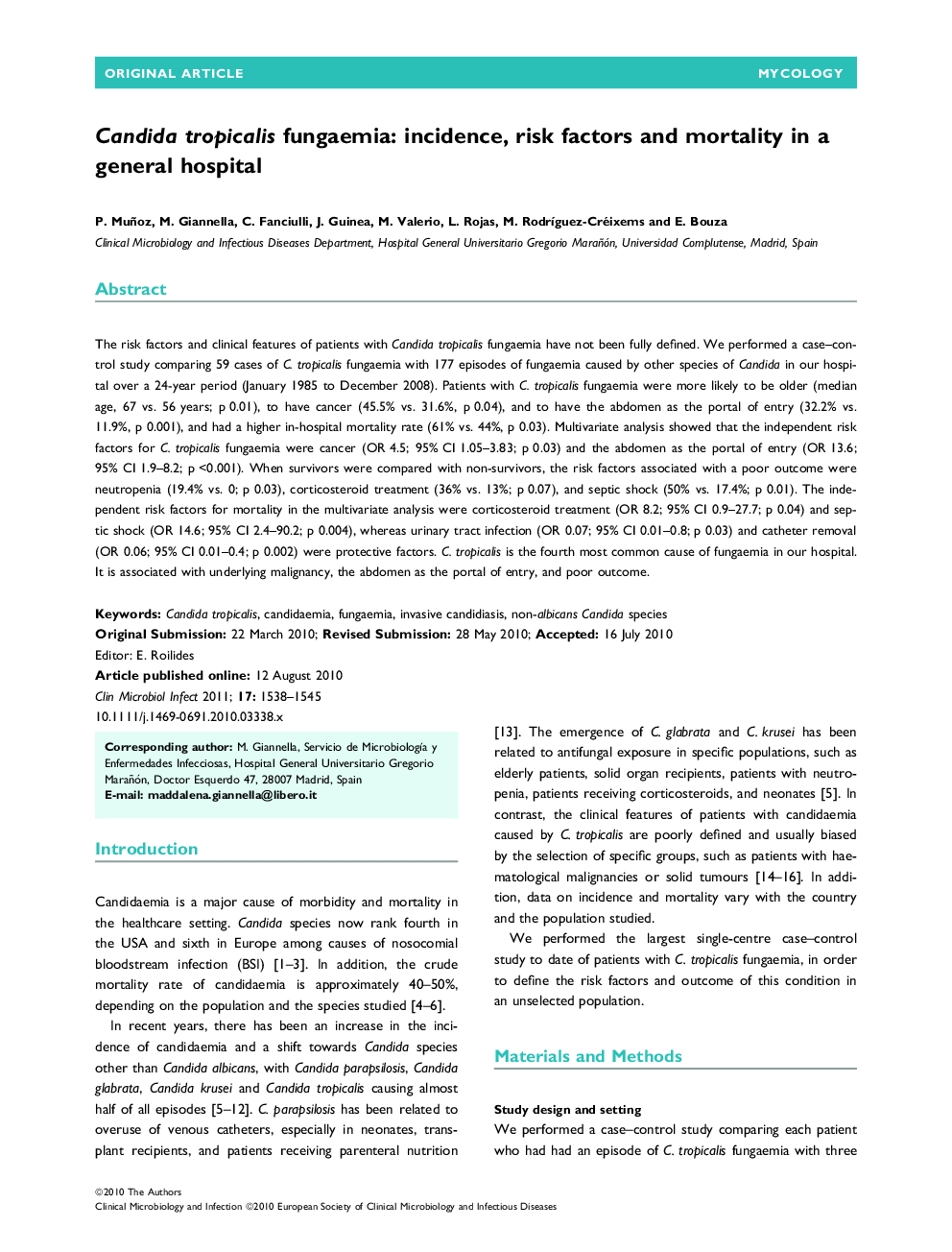| Article ID | Journal | Published Year | Pages | File Type |
|---|---|---|---|---|
| 3397329 | Clinical Microbiology and Infection | 2011 | 8 Pages |
The risk factors and clinical features of patients with Candida tropicalis fungaemia have not been fully defined. We performed a case–control study comparing 59 cases of C. tropicalis fungaemia with 177 episodes of fungaemia caused by other species of Candida in our hospital over a 24-year period (January 1985 to December 2008). Patients with C. tropicalis fungaemia were more likely to be older (median age, 67 vs. 56 years; p 0.01), to have cancer (45.5% vs. 31.6%, p 0.04), and to have the abdomen as the portal of entry (32.2% vs. 11.9%, p 0.001), and had a higher in-hospital mortality rate (61% vs. 44%, p 0.03). Multivariate analysis showed that the independent risk factors for C. tropicalis fungaemia were cancer (OR 4.5; 95% CI 1.05–3.83; p 0.03) and the abdomen as the portal of entry (OR 13.6; 95% CI 1.9–8.2; p <0.001). When survivors were compared with non-survivors, the risk factors associated with a poor outcome were neutropenia (19.4% vs. 0; p 0.03), corticosteroid treatment (36% vs. 13%; p 0.07), and septic shock (50% vs. 17.4%; p 0.01). The independent risk factors for mortality in the multivariate analysis were corticosteroid treatment (OR 8.2; 95% CI 0.9–27.7; p 0.04) and septic shock (OR 14.6; 95% CI 2.4–90.2; p 0.004), whereas urinary tract infection (OR 0.07; 95% CI 0.01–0.8; p 0.03) and catheter removal (OR 0.06; 95% CI 0.01–0.4; p 0.002) were protective factors. C. tropicalis is the fourth most common cause of fungaemia in our hospital. It is associated with underlying malignancy, the abdomen as the portal of entry, and poor outcome.
